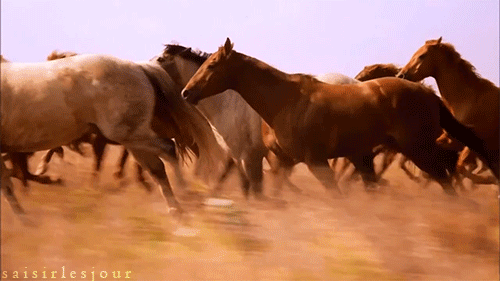Horses

Horses (Equus ferus caballus) originate from Central Asia. They were domesticated to help with agricultural work and transportation, among other purposes. They have a lifespan of around 25-30 years, and they tend to live in groups called herds. Horses need plenty of space to remain in good health, so a large pasture is recommended for the horse to exercise and graze; a stable is also required to shelter from the elements, but staying the majority of the day in a stable is highly discouraged. Even if they have a comfortable stable, horses will develop stress and bad habits if they are not able to run freely for long periods of time. Chewing on the wooden structure and attempts to kick the stable walls are signs of stress and discontentment.
They were domesticated to help with agricultural work and transportation, among other purposes. They have a lifespan of around 25-30 years, and they tend to live in groups called herds. Horses need plenty of space to remain in good health, so a large pasture is recommended for the horse to exercise and graze; a stable is also required to shelter from the elements, but staying the majority of the day in a stable is highly discouraged. Even if they have a comfortable stable, horses will develop stress and bad habits if they are not able to run freely for long periods of time. Chewing on the wooden structure and attempts to kick the stable walls are signs of stress and discontentment.
Horses use their ears, eyes, legs, tails, and vocalizations to communicate with each other and with their owner. While body language might seem like a horse’s main mean of communication, vocalizations aid in getting a horse’s message across. They will nicker when they want other horses or their owner to follow them; horses will snort when they are alerting of a potential threat, whinny when they want to follow others of its kind, and squeal when highly annoyed, which unfortunately often leads to a fight.  Flattened ears coupled with hooves pawing the ground indicate anger or impatience, but when the horse is attentive and their ears are turned forward it usually means that something has caught the horse’s interest.
Flattened ears coupled with hooves pawing the ground indicate anger or impatience, but when the horse is attentive and their ears are turned forward it usually means that something has caught the horse’s interest.
Every good pet owner wants her or his animal to be happy, and when you see your horse’s relaxed posture, you can be sure your animal is content. Furthermore, some signs that you have gained your horse’s trust is when they softly nicker and/or whinny at you, greeting you when you enter the stable or pasture, and if allowed, they will happily attempt to follow you around.